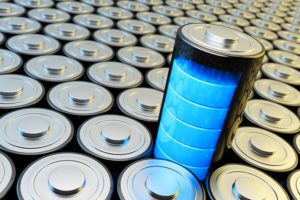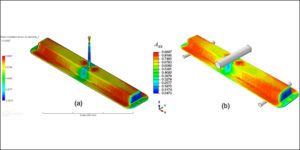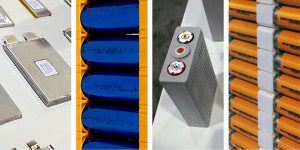Scientists at the DOE’s Pacific Northwest National Lab have uncovered a “root” cause of the growth of needle-like structures – known as dendrites and whiskers – that plague lithium batteries and can cause short circuit, failure, and even fire. Dendrites are tiny, rigid tree-like structures that can grow inside a lithium battery. Their needle-like projections… Read more »
Search Results Found For: "PNNL"
PNNL research finds that optimal salt concentration increases battery life
Researchers at the DOE’s Pacific Northwest National Laboratory have discovered that the “special sauce” of batteries is all about the salt concentration. By getting the right amount of salt right where they want it, they’ve demonstrated that a lithium-metal battery can undergo about seven times more charge/discharge cycles than batteries with conventional electrolytes. Finding an electrolyte solution… Read more »
Thinner anode strips could lead to longer lithium metal battery life
Researchers from the Pacific Northwest National Laboratory (PNNL) have increased the lifetime of a lithium metal battery to a record 600 cycles. The research was done through DOE’s Innovation Center for Battery500 Consortium. The work was published in the journal Nature Energy. The PNNL team found a way to increase the battery’s lifetime using 20-micron-wide… Read more »
Magnetic nanoparticles pull valuable elements from water sources
Using magnetic nanoparticles to capture valuable materials from brines could help make the US a producer of minerals used in electronics and energy production. Today, most of these minerals are obtained from international sources, many of which are located in high-conflict regions. The patent-pending technology, developed at the DOE’s Pacific Northwest National Laboratory (PNNL), has… Read more »
More conductive copper could increase motor efficiency
Researchers at Pacific Northwest National Laboratory (PNNL) claim to have increased the conductivity of copper wire by about five percent. That may seem like a small amount, but it could make a big difference in motor efficiency. Higher conductivity would also mean that less copper would be needed for the same efficiency, which could reduce… Read more »
The emerging “non-utilities”—EVs are helping new players in the energy marketplace.
Gordon Feller serves on the boards of several non-profit organizations focused on the future of greener mobility. He formerly served as President Obama’s appointee to a US Federal Commission established to assess emerging energy-focused digital technologies. Dramatic pricing changes, shifting cost structures, new demand curves and technologies that enable efficient decentralization are driving a dramatic… Read more »
Predicting the properties of lightweight carbon fiber composites
Carbon fiber-reinforced plastics represent a promising lightweight replacement for heavy steel. However, for carbon fiber to be widely adopted, new, more economical composites need to be developed. Unfortunately, carbon fiber properties are difficult to model, as they depend on complex features such as fiber loading, length distribution and orientation. Now researchers at the DOE’s Pacific… Read more »
DOE awards $6 million to first crop of Battery500 Seedlings
The Battery500 consortium, led by the DOE’s Pacific Northwest National Laboratory (PNNL), intends to build a battery pack with a specific energy of 500 Wh/kg, which would more than double the 170-200 Wh/kg per kilogram in today’s typical EV battery. Part of the initiative is the “Seedling” program, which identifies new and risky battery research… Read more »
Battery500 consortium aims to develop 500 Wh/kg battery pack
One of the Obama Administration’s recently announced initiatives to promote EV adoption is the Battery500 consortium, which will be led by Pacific Northwest National Laboratory (PNNL), and includes several other national laboratories and universities. The group will receive up to $10 million a year over five years from the DOE. The goal of Battery500 is… Read more »
New study identifies one culprit behind Li-sulfur battery capacity fade
Lithium-sulfur batteries theoretically offer high energy density, and are widely seen as a promising next-generation energy storage system. However – you guessed it – they have several drawbacks. Among other issues, capacity tends to fade quickly. Researchers at the DOE’s Pacific Northwest National Laboratory (PNNL) have identified one of the reasons behind this problem, and found… Read more »













